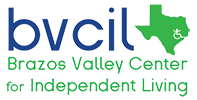Bryan
Paul Kaspar
ADA Coordinator
(979) 209-5030
Mailing Address: P.O. Box 1000 Bryan, Texas 77803 Bryan, Texas 77805
Physical Address: City of Bryan City of Bryan 300 S. Texas Avenue
Bryan Grievance Form: http://docs.bryantx.gov/engineering/ADA/Bryan_ADA_Grievance_Process_Form.pdf
College Station
Aubrey Nettles
ADA Coordinator
(979) 764-3423
Mailing Address: P.O. Box 9960 College Station, TX 77842
Physical Address: 1101 Texas Ave. College Station, TX 77845
College Station Grievance Form: http://www.cstx.gov/Modules/ShowDocument.aspx?documentid=23200
Sample Email for Concern(s) Reporting (Bryan): Template 1
To: ada@bryantx.gov
Subject: Concern(s) of ___________________
Dear Mr. Kaspar,
I would like to report a concern regarding to the inconvenience for people with disabilities in the city of Bryan.
I found that the design of ______________ [the object] at _______________________ [the place of the object] is not reasonable or convenient for people who ____________ ____________ [the kind of disabilities this object may cause inconvenience to, e.g. sit in wheel chair, lose vision], because __________________________________________ __________________________________________________________ [how the object cause the inconvenience for those people]. I suggest (that) _________________ __________________________________________________________________ [the change/adjustment that can help improve this situation].
I would appreciate it if my concern(s) can raise your attention on this issue. Please let me know what improvement(s) you can make. I look forward to your reply soon and hope for the best for our city!
Best,
_____________________ [Your name]
Email: ________________________
Phone: _______________________
Sample Email for Concern(s) Reporting (Bryan): Template 2
To: ada@bryantx.gov
Subject: Concern(s) of ___________________
Dear Mr. Kaspar,
I would like to report a concern regarding to the inconvenience for people with disabilities in the city of Bryan.
I found that there is no / not enough [circle one] ____________________ [the object] at ______________________________ [the place] for people who __________________ ____________ [the kind of disabilities, e.g. sit in wheel chair, lose vision] to use. The lack of this object can cause (that) __________________________________________ ________________________________ [the result of not having enough those objects]. I suggest (that) __________________________________________________ [the change/adjustment that can help improve this situation].
I would appreciate it if my concern(s) can raise your attention on this issue. Please let me know what improvement(s) you can make. I look forward to your reply soon and hope for the best for our city!
Best,
_____________________ [Your name]
Email: ________________________
Phone: _______________________
Sample Email for Concern(s) Reporting (College Station): Template 1
Subject: Concern(s) of ___________________
Dear Ms. Nettles,
I would like to report a concern regarding to the inconvenience for people with disabilities in the city of Bryan.
I found that the design of ______________ [the object] at _______________________ [the place of the object] is not reasonable or convenient for people who ____________ ____________ [the kind of disabilities this object may cause inconvenience to, e.g. sit in wheel chair, lose vision], because __________________________________________ __________________________________________________________ [how the object cause the inconvenience for those people]. I suggest (that) _________________ __________________________________________________________________ [the change/adjustment that can help improve this situation].
I would appreciate it if my concern(s) can raise your attention on this issue. Please let me know what improvement(s) you can make. I look forward to your reply soon and hope for the best for our city!
Best,
_____________________ [Your name]
Email: ________________________
Phone: _______________________
Sample Email for Concern(s) Reporting (College Station): Template 2
Subject: Concern(s) of ___________________
Dear Ms. Nettles,
I would like to report a concern regarding to the inconvenience for people with disabilities in the city of Bryan.
I found that there is no / not enough [circle one] ____________________ [the object] at ______________________________ [the place] for people who __________________ ____________ [the kind of disabilities, e.g. sit in wheel chair, lose vision] to use. The lack of this object can cause (that) __________________________________________ ________________________________ [the result of not having enough those objects]. I suggest (that) __________________________________________________ [the change/adjustment that can help improve this situation].
I would appreciate it if my concern(s) can raise your attention on this issue. Please let me know what improvement(s) you can make. I look forward to your reply soon and hope for the best for our city!
Best,
_____________________ [Your name]
Email: ________________________
Phone: _______________________

